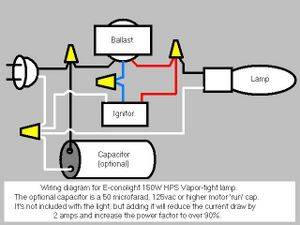NanoScroger
Member
Hey Quazi. In that diagram you have of the ballast wiring in the first post, then the later posts of how your setup is wired in that junction box.
The red and blue wires are flip flopped. the ballast in your pics has the reds bundled along with the black from the bulb socket, as where the digram has the blues bundled along with the black from the socket.
i think the econolight ballast {reactor} are blue wires connect from ballast to igniter. red wires connect together along with the black from the socket.
The red and blue wires are flip flopped. the ballast in your pics has the reds bundled along with the black from the bulb socket, as where the digram has the blues bundled along with the black from the socket.
i think the econolight ballast {reactor} are blue wires connect from ballast to igniter. red wires connect together along with the black from the socket.

 Took me about an hour, mostly because I was trying not to fuck anything up or burn anything down, but success! Haven;t found anything to put it in yet though, just in the original casing. proof:
Took me about an hour, mostly because I was trying not to fuck anything up or burn anything down, but success! Haven;t found anything to put it in yet though, just in the original casing. proof: 

 everyone!
everyone!

